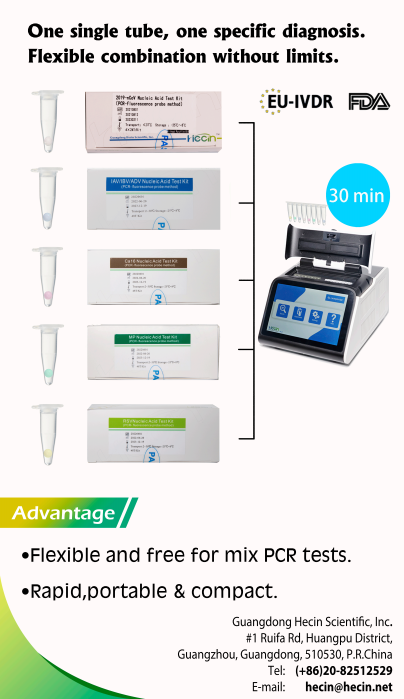As the cold winter approaches in the Northern Hemisphere, a surge in respiratory illnesses marks the start of a challenging season.
Respiratory diseases are intertwined and complex, creating a maze of symptoms that confuse medical professionals and worried parents What medicine is appropriate for their child's illness Why can’t I recover even after taking medicine These questions echo in the minds of doctors and caregivers.
When multiple respiratory viruses come together to cause reinfections, it is critical to quickly identify the culprit.
Hecin enters the field of respiratory disease diagnostics with a breakthrough solution a combined multi-respiratory virus detection method designed to decipher the intricate web of viral invaders.
What exactly can this cutting-edge detection method reveal?
Respiratory viruses include a variety of pathogens that invade the respiratory tract, causing local lesions or using the respiratory tract as a gateway to cause damage to other organs.
This state-of-the-art detection solution covers a range of pathogens
- Influenza A virus
- Influenza B virus
- Mycoplasma pneumoniae
- Respiratory syncytial virus
- Adenovirus
- Parainfluenza virus type I
- Parainfluenza virus type III
- Human Bocavirus
Each culprit has his or her signature symptoms
Influenza A virus
Symptoms include sudden onset of high fever with difficulty breathing, including cough, sore throat, and nasal congestion. Systemic manifestations may include fatigue, headache, and body aches, as well as potential complications such as pneumonia or exacerbation of pre-existing conditions.
Influenza B virus
It is similar to the influenza A virus and has similar clinical manifestations.
Mycoplasma pneumoniae
It is characterized by a gradual onset, persistent dry cough accompanied by sore throat and chest discomfort when breathing or coughing. Systemic reactions usually include fever, fatigue, headache, and occasionally rash.
Respiratory syncytial virus (RSV)
Symptoms include a runny nose, coughing, and sneezing, and are especially severe in infants, causing difficulty breathing, wheezing, and sometimes discoloration of the skin (cyanosis).
Adenovirus
It manifests as respiratory symptoms such as sore throat, cough, and fever. Of note, other indications may include conjunctivitis (pink eye) and gastrointestinal disorders such as diarrhea.
Parainfluenza viruses types I and III
It is characterized by croup-like symptoms - hoarseness, barking cough, and difficulty breathing. In severe cases, pneumonia or bronchiolitis may develop, especially in young children.
Human Bocavirus
Respiratory symptoms such as cough, runny nose, and fever in young children often escalate to bronchiolitis or pneumonia.
The most cutting-edge nucleic acid test for respiratory viruses has unparalleled advantages high specificity, high sensitivity, and short window period. It is the gold standard for virus detection. This innovation enables accurate clinical diagnosis, guiding doctors to develop precise and tailored treatment strategies.






